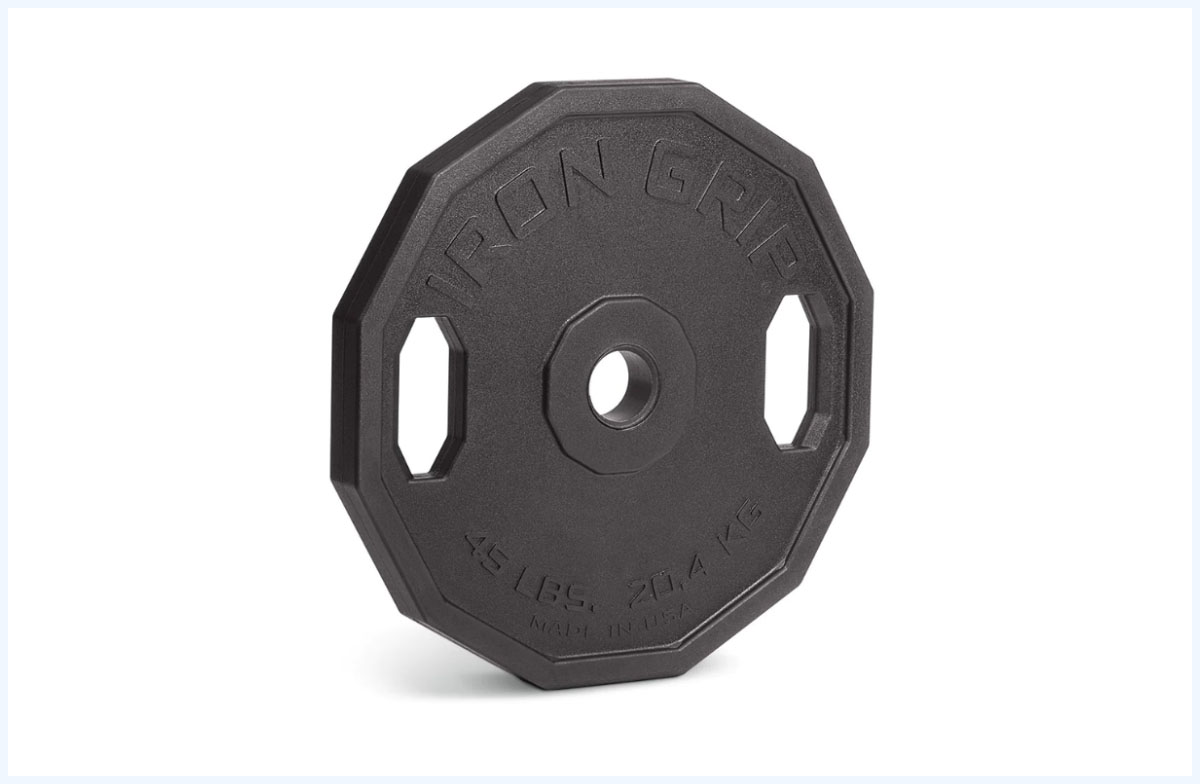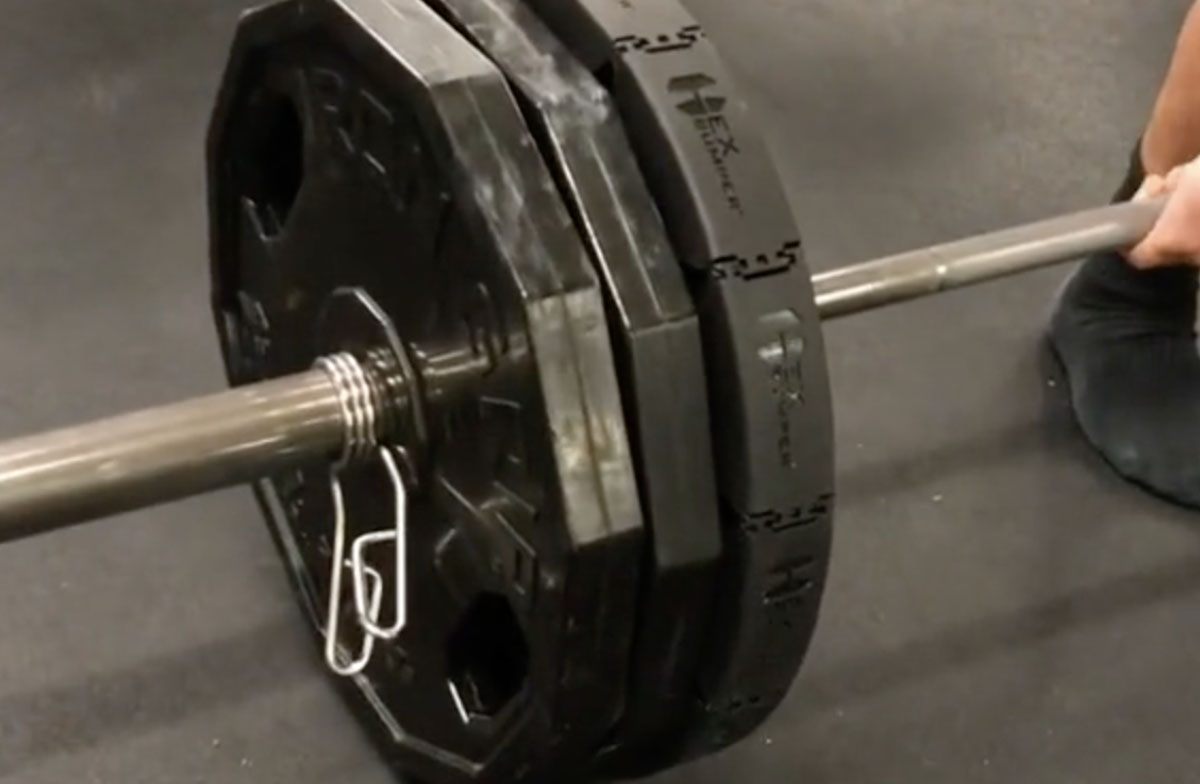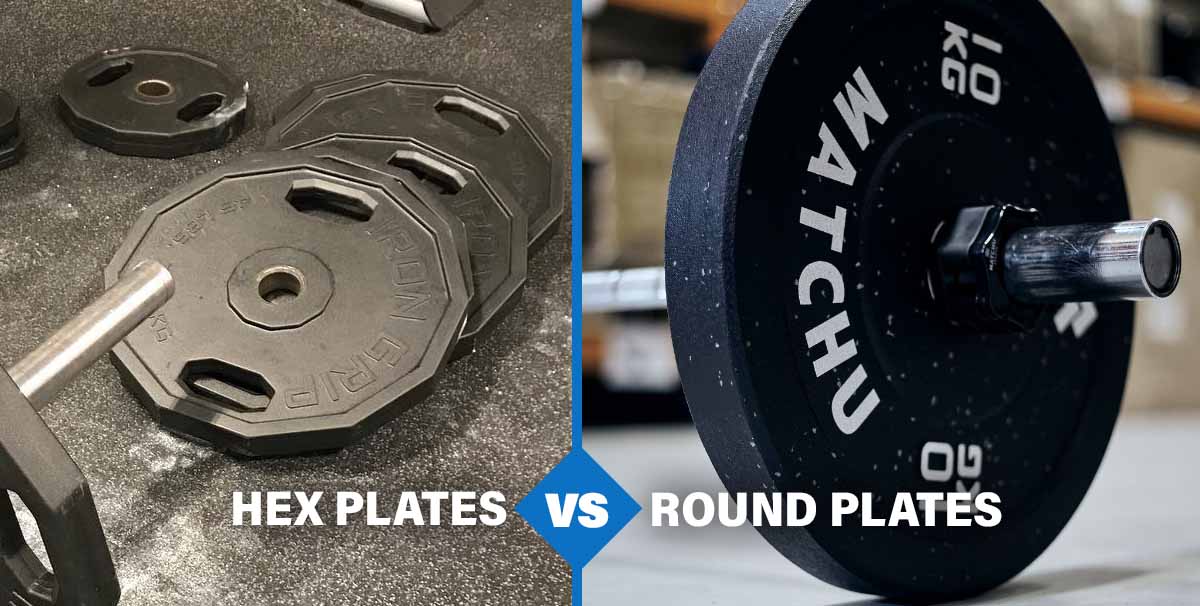When it comes to weightlifting, you may wonder what the difference is between lifting with hex plates vs. round plates.
This is why I spent the past few days testing both plates and found that Round plates are the best choice if you’re a beginner, and Hex plates are better if you’re an experienced lifter looking for a challenging workout.
Takeaways to Keep in Mind
First, they make any exercise that involves lifting weights off the ground and setting them back down much easier.
Because hex plates rotate a bit when lifted, it can be difficult to set them down on a flat surface without tipping them over.
On the other hand, round plates are more comfortable to use since they do not have sharp edges. This makes it less likely that you will hurt yourself while lifting.
Finally, round plates are better for your workout because they allow you to use proper form more easily. This is because the weight is distributed evenly on the plate, so you are less likely to wobble or lose your balance.
What are hex plates?

Hex plates are weight plates with flat sides instead of round edges that are usually found on weight plates.
These kinds of weightlifting plates are more difficult to use if you are not familiar with proper form or how to drop them correctly. This is because they tend to rotate and fall on their edges.
Hex plates are typically made of cast iron or steel and have handles on each side so that lifters can easily pick them up and move them around.
Before training with hex plates, I would suggest consulting with a local gym or online professional to figure out your fitness level before lifting these types of plates.
Plus, It’s always better to be safe than sorry when working out!
Is It Safe to Use Hex Plates?
The short answer is yes, it is safe to use hex plates. However, as with any type of weightlifting equipment, there is always a risk of injury if you do not use the proper form or handle the weights poorly.
In order to avoid injury, it is important to control each rep and use touch-and-go reps. This means that you should not let the weights crash down after each lift. Instead, set them down gently and under control.
In addition, you can purchase tools (hexbumper) that can transform hex plates into bumper plates. Bumper plates are designed to be dropped, so they are much safer than hex plates.
What makes round plates better than hex plates?
There are several reasons why round plates are better than hex plates for weightlifting.
First, round plates are less likely to damage flooring or equipment when dropped. The rounded edges of the plates distribute the force of impact more evenly, preventing damage to the floors or equipment.
Second, round plates tend to be more stable when you set the bar down between reps and are less likely to tip over.
However, hex plates have six sides that can catch on the ground and cause the plate to tip over. On the other hand, round plates tend to stay still on a flat surface, especially if you have a lifting platform or rubber flooring.
Third, it is much easier to maintain proper form when performing deadlifts and similar exercises with round plates. This is because the round shape of the plates allows for a more natural range of motion, making it easier to keep good form.
Finally, your injury risk is much lower when using a barbell loaded with round plates for compound lifts since the weight is evenly distributed around the barbell, preventing uneven loading that can lead to injuries.
Can you mix Hex and Round plates?
Yes, you can mix hex and round plates, but I recommend getting a tool (hexbumper) that converts your current 45lb hex plates to round ones.
First, put on the converted hex round plate, then the other hex dishes. While lifting or dropping, the round plate should provide enough raise from the ground so that the hex plates don’t touch the ground.
Here is an example video clip showing how you can rotate/spin the hex plates without them touching the ground.
It may work for some people to mix hex and round plates, but I think a tool to convert the hex plates to round ones would be more useful and less expensive.
Is it OK to drop Hex Plates on concrete?
One of the most important things to consider when working out with weights is the type of surface you are working out on.
For example, many believe dropping free weights on a concrete floor is perfectly fine. However, this can lead to serious damage to the weights and the floor itself.
The impact of dropping a weight on a hard surface can cause the weight to crack or chip. For hex plates, it could fall on one of the edges and tip over, causing injuries.
Also, over time, this can lead to the weight breaking completely in half. In addition, the impact can also damage the concrete floor, causing it to fracture.
As a result, it is important to be cautious when working out with weights (hex plates in particular) and always use a mat or other soft surface to protect your equipment and your floors.
Can You Deadlift with Hex Plates?
Yes, you can deadlift with hex plates, but it is important to use caution and be aware of the potential risks.
Hex plates are more likely to tip over due to their sharp edges, so keeping this in mind when setting up for your lift is important.
Also, because the weight is not evenly distributed on a hex plate, you may find it more difficult to maintain proper form when lifting.
For these reasons, it is generally recommended that lifters use round plates for deadlifts.
However, if you are experienced with lifting and feel comfortable using hex plates, there is no reason why you cannot continue to do so.
Just be sure to use caution and focus on maintaining good form.
Why Deadlifting With Hex Plates Feels More Difficult?
One of the most frustrating things about deadlifting with hex plates is how gravity always seems to work against you.
No matter how hard you try, it seems like the hex plate always wants to land on a corner. And because of Murphy’s law, one plate often ends up rolling forward onto its edge while the other rolls backward. This can make the exercise feel more difficult than it actually is.
The good news is that there are a few things you can do to help counteract the effects of gravity when you’re deadlifting with hex plates.
First, position the plates so they are evenly balanced on each side of the barbell. This will help to prevent one plate from rolling over while the other remains stationary.
Second, try holding the barbell in an overhand grip rather than an underhand grip. This will give you more control over the barbell and help to keep it from rolling away from you.
Finally, be sure to focus on your form and technique. Keeping your back straight and your feet firmly planted will help you lift the barbell more easily and prevent injuries.
What are hex plates made of?
Hex plates are strong, durable, and effective in various workout routines if used correctly. They are made of cast iron, which is a material that is known for its durability.
The plate’s hexagonal shape and flat edges make them easier to hold and stay in place when laid down.
However, their flat edge also makes them more likely to tip over, causing injuries when used, making round plates a better choice for beginners.
Some benefits of using hex plates include:

- They offer a more challenging workout because the irregular shape makes it difficult to keep the weight balanced.
- They are less likely to roll away when you set them down, which can be beneficial if you are lifting in an area with limited space.
- The handles on hex plates make them easier to grip, which can be helpful if you have weak or small hands.
- They are less likely to slide across a smooth surface, making them ideal for use on tile or hardwood floors.
- Stacking hex plates is easier when you convert the 45lb plate into a circular one (hexbumper).
There are also some potential drawbacks to using hex plates, such as:
- Their irregular shape makes them more difficult to balance, which can lead to injuries if you are not careful.
- They are more likely to tip over than round plates, so you need to be extra cautious when using them.
- The weight is not evenly distributed on a hex plate, making it more difficult to maintain proper form.
The Verdict
There are a lot of factors to consider when deciding which type of weight plate is best for your workout.
Hex plates are generally more challenging to work with, so if you are new to lifting or have any safety concerns, it is best to stick with round plates.
However, if you are an experienced lifter looking for a more challenging workout, hex plates may be the right choice.
Either way, be sure to focus on proper form and technique to avoid injuries.




